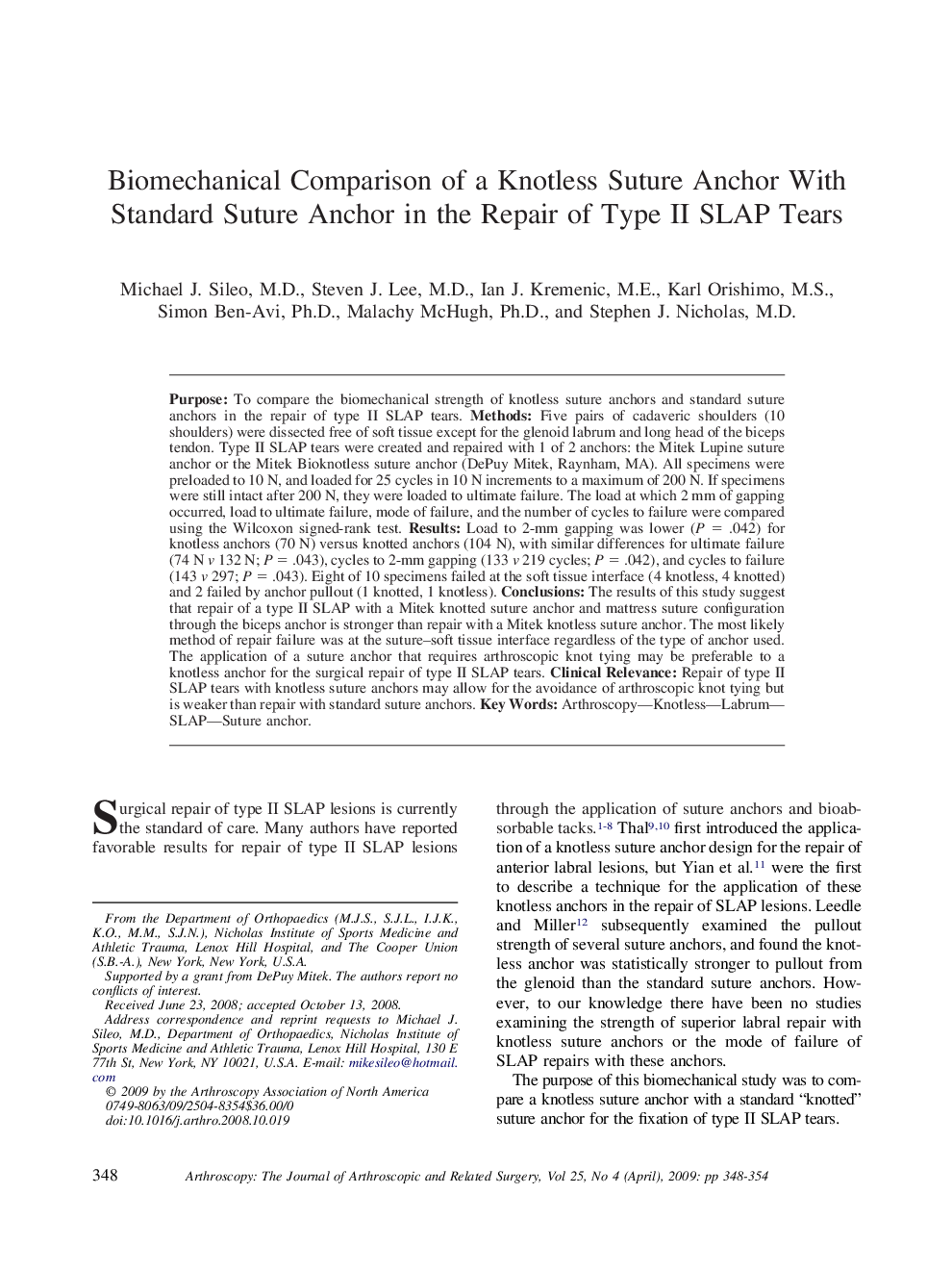| کد مقاله | کد نشریه | سال انتشار | مقاله انگلیسی | نسخه تمام متن |
|---|---|---|---|---|
| 4046508 | 1603573 | 2009 | 7 صفحه PDF | دانلود رایگان |

PurposeTo compare the biomechanical strength of knotless suture anchors and standard suture anchors in the repair of type II SLAP tears.MethodsFive pairs of cadaveric shoulders (10 shoulders) were dissected free of soft tissue except for the glenoid labrum and long head of the biceps tendon. Type II SLAP tears were created and repaired with 1 of 2 anchors: the Mitek Lupine suture anchor or the Mitek Bioknotless suture anchor (DePuy Mitek, Raynham, MA). All specimens were preloaded to 10 N, and loaded for 25 cycles in 10 N increments to a maximum of 200 N. If specimens were still intact after 200 N, they were loaded to ultimate failure. The load at which 2 mm of gapping occurred, load to ultimate failure, mode of failure, and the number of cycles to failure were compared using the Wilcoxon signed-rank test.ResultsLoad to 2-mm gapping was lower (P = .042) for knotless anchors (70 N) versus knotted anchors (104 N), with similar differences for ultimate failure (74 N v 132 N; P = .043), cycles to 2-mm gapping (133 v 219 cycles; P = .042), and cycles to failure (143 v 297; P = .043). Eight of 10 specimens failed at the soft tissue interface (4 knotless, 4 knotted) and 2 failed by anchor pullout (1 knotted, 1 knotless).ConclusionsThe results of this study suggest that repair of a type II SLAP with a Mitek knotted suture anchor and mattress suture configuration through the biceps anchor is stronger than repair with a Mitek knotless suture anchor. The most likely method of repair failure was at the suture–soft tissue interface regardless of the type of anchor used. The application of a suture anchor that requires arthroscopic knot tying may be preferable to a knotless anchor for the surgical repair of type II SLAP tears.Clinical RelevanceRepair of type II SLAP tears with knotless suture anchors may allow for the avoidance of arthroscopic knot tying but is weaker than repair with standard suture anchors.
Journal: Arthroscopy: The Journal of Arthroscopic & Related Surgery - Volume 25, Issue 4, April 2009, Pages 348–354